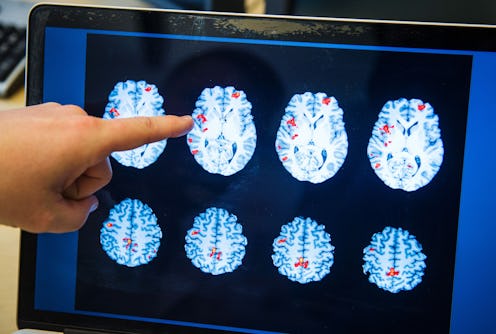News
Meet Your Next Biggest Fear
The world is full of frightening things. There are spiders, the things that go bump in the night, repeated threats to women's reproductive rights, and, for a lot of folks, the current class of presidential candidates. But if you really needed another thing to fear, there's Naegleria fowleri. Known colloquially as "the brain-eating amoeba," Naegleria fowleri is perhaps the smallest thing you never want to come in contact with. While the odds of being infected with Naegleria fowleri are relatively low, infection is almost always fatal.
There is not one aspect of contracting a brain-eating amoeba that sounds even remotely pleasant. After entering the body, Naegleria fowleri moves along the olfactory nerve to reach the brain through the skull's cribriform plate. Once in the brain, the amoeba really makes itself at home by eating and destroying vital tissue.
Four cases of primary amoebic meningoencephalitis, an infection of the brain caused by the Naegleria fowleri parasite, have been reported so far this year, the latest of which occurred earlier this month. Florida teen Sebastian DeLeon, who doctors believe came in contact with the brain-eating amoeba while swimming on private property, is one of only four people in the United States known to have survived primary amoebic meningoencephalitis.
Despite primary amoebic meningoencephalitis' high rate of fatality — most die within roughly five days of contracting the parasite — infection is rare. According to the Center for Disease Control and Prevention, the U.S. has seen only 138 reported cases of primary amoebic meningoencephalitis from 1962 to 2015.
You won't find Naegleria fowleri just anywhere. This brain-eating amoeba lives in warm freshwater lakes, rivers, and hot springs, so beach-goers can breathe a sigh of relief. However, infections don't only occur in natural bodies of water. An 18-year-old Ohio woman died from primary amoebic meningoencephalitis in June after picking up the brain-eating amoeba at the U.S. National Whitewater Center in Charlotte, North Carolina. Naegleria fowleri is also a bit harder to contract than you might assume. For example, swallowing contaminated water won't land you in the hospital with symptoms of primary amoebic meningoencephalitis. Naegleria fowleri can only be contracted through water forced up the nose (nose plugs don't seem so dorky now, do they?).
Obviously, enjoying a day around water can contain a handful of other risks, such as drowning, that are more likely to occur than infection from a brain-eating amoeba. So, I'm not advocating for abstinence of water-related activities, just encouraging awareness and precaution, because few things will send a shiver down your spine quite like the phrase "brain-eating amoeba."
